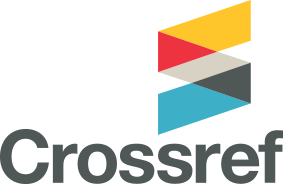PENGARUH PENGHILANGAN RAFINOSA DALAM PENGENCER TRIS AMINOMETHANE KUNING TELUR TERHADAP KUALITAS SEMEN KAMBING BOER SELAMA SIMPAN DINGIN
Abstract
The objective of this research was to examine the effect of removal raffinose in tris aminomethane egg yolk diluents to semen quality of Boer goat during chilled preservation. This research was carried out at Animal Reproduction Laboratory and Sumber Sekar Laboratory, Animal Husbandry Faculty, Brawijaya University from December 11th 2016 to January 31th 2017. Semen diluent was divided into two groups, there were P0 (80% Tris Aminomethane + 20% Egg Yolk); and P1 (80% Tris Aminomethane (without raffinose) + 20% Egg Yolk). Parameter of this research was motility percentage, viability percentage, and abnormality percentage. Data of this research was analyzed using paired design t test. The result showed that after five days chilled preservation, was different (P<0,05) on the average motility percentage between P0 (39,50±9,26%) and P1 (43,50±6,26%). There was significantly different (P<0,01) on the average viability percentage between P0 (45,86±15,66%) and P1 (46,38±15,32%). There was significantly different (P<0,01) on the average abnormality percentage between P0 (1,76±0,60%) and P1 (2,31±0,75%). Total motile sperm count after 5 days chilled preservation was different (P<0,05) in P0 treatment and not different (P>0,05) in P1 treatment compared to the expectation value of 40 million sperm/ml. The conclution of this research was the tris aminomethane egg yolk diluent without raffinose could protect of Boer goat semen quality during chilled preservation.
Keywords: boer goat semen, tris aminomethane, raffinose, chilled preservation
Publication ID
DOI https://doi.org/10.21776/ub.jtapro.2017.018.01.5Refbacks
- There are currently no refbacks.

This work is licensed under a Creative Commons Attribution-NonCommercial 4.0 International License.










